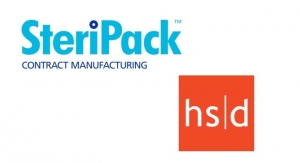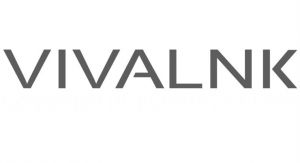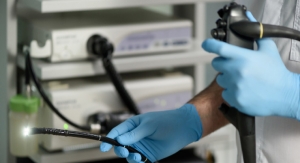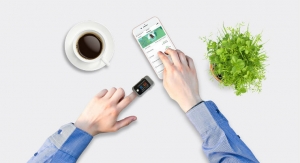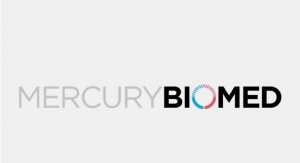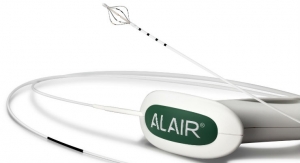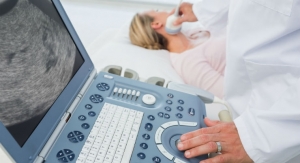Kay Sinclair & Natalie Scott, Sagentia10.19.11
Medical device usability and how to efficiently integrate new regulatory standards into the product development process seems to be on a lot of people’s minds at the moment.
The new set of human factors standards that were introduced in 2010 (HE75, the new ANSI/AAMI standard and the IEC62366) aim to address the high number of medical device incidents that involve usability issues. By requiring companies to now track user feedback and justify proposed use-error mitigation approaches, regulators are emphasizing the important role that usability plays in product safety. These new regulations are also in response to the fact that as some therapies transition away from clinical environments, medical devices increasingly are being used by a patient population that has less experience and training.
This article argues that in addition to promoting safety and user compliance, however, integrating usability into a product development program is also quite simply good design practice. The best way it is argued of adhering to the new standards is to 1) take a holistic view of usability and incorporate it as a key component of every product development program and; 2) make sure that the specific market demands for each new product are understood from the onset. To support this, a case will be made, and suggestions will be given, for the integration of usability and human factors research into medical device development process.
Four key medical device areas will be reviewed: drug delivery, critical care, diagnostics and surgical, highlighting how each area has a differing set of usability challenges.
Why Spend Time on Usability?
Integrating usability into the product development process is not just good design practice, it ensures that a product is usable by the intended target users, for the intended use scenarios. This ultimately leads to improved patient compliance and delivers better clinical outcomes. A good example of this is a diabetic who needs to take their medication while at a restaurant. This type of user might want something that is discreet, fast and can be done one-handed. For diabetics who are visually impaired and/or have limited dexterity, the possible capability limitations are even more important to consider given the usage scenario.
An appropriately designed insulin device enables correct use and encourages regular and maintained use of the device. This is enabled through optimizing the user experience, which fundamentally reduces the potential for use error and user risk, in addition it provides the benefits of user comfort, confidence trust and ultimately desirability—leading to increased customer loyalty. The point is that if people are involved in the use of a product, then human factors should be core to that product’s development process. This is especially relevant in the medical field where you need to improve compliance, prove effectiveness and reduce potential safety risks. This is not just about product satisfaction.
It is important to note here that, fundamentally, the typical goal of a medical device product development program is that a product works and is reliable for manufacturing, meets end usage objectives and achieves target commercial return. Usability, unfortunately, often can be sidelined, delayed or considered to be an add-on to technical development. This is a mistake. Human factors can support all three parts of this goal. It provides the essential insight to balance, help challenge, inform and direct technical decisions throughout the development life cycle, leading to a better outcome for both the user and the manufacturing process. Following from this, streamlined manufacturing and good usability usually deliver sound commercial return.
In the extreme case, poor usability can lead to product recalls which aside from being costly to rectify, can also have a highly damaging effect on a company’s technical and corporate reputation. A good example of this from a different industry is what happened to Maclaren (a United Kingdom-based manufacturer of baby strollers and carriages) in late 2009 due to a poorly designed pram. Maclaren had to issue a product recall in the United States because of more than a dozen incidents where children’s fingers got caught and seriously injured in the hinges of their folding push-chairs. This was a global PR nightmare for Maclaren and caused significant damage to the company’s previously strong market reputation.
The converse is also true: A company that gains a positive reputation for the usability of its products will benefit from increased customer loyalty, reputation and hence sales across its entire product portfolio.
Well-designed devices will result in improved customer support through simpler user manuals and related learning tools, and reduced sales support requirements. With increasing home use of medical products, this can reduce patient training time and also potentially improve compliance.
The research and development approach that a company takes to integrate human factors into a successful product development program can be flexible. This can range from having a specific usability expert challenge the product development at appropriate points to a more integrated approach that uses specific human-factors tools throughout the development process. Regardless, some form of human-factors effort should be included as part of the product development process.
What's Your Approach to Human Factors?
Once the importance of usability is understood, the immediate question is around what methods should be used to access the appropriate insights.
Below is an overview of three groups of usability tools that should fundamentally be considered as part of any medical product development program:
• Context exploration
Context exploration tools help define and understand the target user(s) and their use environments. This will involve exploration of the task analysis, use scenarios and potential use errors and hazards. Capability exploration should also be a key part of human factors. It also involves exploring the physical, cognitive and sensory boundaries of each user profile and should be used as a framework throughout user testing. There are seven capability scales that can be used in isolation to explore and improve the usability of a device or concept.
• User perspective exploration
User study tools can have many different guises exploring potential use errors and hazards, user preference and instinct, physical and cognitive demand, user performance and capability boundaries, etc. This should include all influencing users and a cross section of each user type as appropriate (i.e., patients, caregivers, health professionals, etc.). It also is important to note that within patient groups there may be people with different capability types, product experiences, health requirements, support mechanisms, environments and geographies that need to be considered.
An expert opinion also can be used to supplement or if necessary substitute for real users. Experts could come from a human factors perspective or a medical care perspective (i.e., a caregiver).
• Justification and documentation requirements for FDA approvals
With the implementation of new human factors standards additional documentation and justification is now required. There are many tools that can be used to address this requirement. A single document approach to tag and trace all potential usability issues is perhaps one of the best.
All documentation for the U.S. Food and Drug Administration (FDA) now will need to include an explanation of the company’s plan for managing and mitigating possible risks. The new standards specifically require companies to justify their device decisions from the perspective of the user. Putting this into context, where the FDA previously may have accepted a design goal that 80 percent of users must be able to open the device first time, the FDA now will want to know more about the 20 percent that couldn’t—what they did and why, and what is the resulting safety risk. A plan to mitigate or control expected or actual use error will therefore be required. This plan may call for a product modification, changes to the user training manual or printed warnings on packaging or the device. While there is perhaps nothing surprising here, the crucial point is that all must now be justified, tested and documented.
How integrate Usability Activities Into Current Product Development Program
The good news in response to this question is that human factors can be a key but flexible part of your product development processes. The main rule is that the specific nature and objectives of each device are understood and addressed. Deciding on the type, shape and size of the human factors tools to use will then depend on a number of factors.
To help guide this, the following questions can be helpful:
• Is this the development of a completely new device for a new market or a redesign of an existing device in a highly populated market?
• What is the complexity of the user interaction?
• What is the potential for and severity of harm that can be caused by interacting with the device?
• How much time and how many resources are available to complete the development?
All of these factors have a significant impact on what and how many tools you choose, and when and how to integrate them.
With regards to the new standards themselves, depending on your current approach to usability and human factors, they will have varying impact. If human factors are not significantly integrated into your approach, the new standards should guide the tools you choose and how they integrate into your process. Alternatively should human factors be current practice, these standards may simply direct how you document, trace and justify the risk of potential use error.
Usability Issues in Medical Device Sectors
Integrating human factors research into medical device design can vary considerably depending on what device is being developed. Medical device developers should make sure they understand both the device category and the product’s specific objectives. Below is a brief summary of the different usability considerations across four of the main device areas.
Drug Delivery
Drug delivery devices for personal use are well established, with insulin, heparin and etanercept (Enbrel) as notable examples. We have moved on from the simple demand for device performance and functionality and pharmaceutical companies are increasingly using device usability as the primary differentiator in the market.
The diabetic market is a good example of this. Insulin pens have been available since the early eighties and have evolved significantly over this time; from a new exciting drug delivery approach with its limitations, through reliability and performance improvements and more recently significant usage improvements. Understanding the patient profile and scenarios of use are extremely important in this area. Diabetes affects a broad range of the population; young or old, active or fragile, etc. and a person can have diabetes for a significant period which will affect their attitude to the disease and administering insulin, their experience of different devices and approaches/routines to managing their condition and their capability due to the impact of the disease and/or age. Therefore, manufacturers have been exploring how diabetes affects a person’s capability, preferences and attitudes given these changing factors is essential to design a successful and usable device.
In comparison, the use of auto-injection devices for rheumatoid arthritis is a newer innovation, with the Sure-Click device (produced by Amgen and Wyeth Pharmaceuticals) only launching in 2006 for Enbrel. And having an auto-injector in this disease area now is seen as a necessity rather than an option. However, the maturity of these devices from a usability point of view is less than that for insulin pens. There is still an opportunity to create differentiation and improve usability by taking into account disease condition and its impact on the users’ capability and through understanding more deeply the potential scenarios of use.
Critical Care
The usability of devices and equipment in the critical care sector always has been of paramount importance. An incorrect interpretation of data or a wrong action can quickly result in severe patient harm. However, with the current trend for the treatment of many chronic conditions to move out of the hospital and into the home, the challenge facing manufacturers of critical care equipment is even more extreme.
Manufacturers need to consider how best to design for the future, where the user may not be a highly trained specialist nurse or technician, and the environment may not be quiet, clean and closely supervised. The FDA is pushing for this to be a consideration now, even if the current generation of device is designed specifically for the hospital only. The aim here is partly to save the time and cost of subsequent product iterations for the home market, but more importantly to prevent the inevitable safety risks that will result from using a device that has not been designed for an untrained user group or the home environment.
Companies introducing new products in this area need to be fully conversant with the usability issues that a change in environment and user profile brings, especially if their previous user target and experience has always been the highly trained healthcare professional. Human factors research can access and quantify the interaction design subtleties that will provide confidence, trust and familiarity with the product, feeding valuable insights through to the development team.
Some key usability issues that need to be considered are:
• The mental models of a specialist nurse versus a lay care worker or a patient are very different. In the case of a nurse, the designer will make usability assumptions based on the nurse’s operational skills acquired through use of similar equipment in a similar clinical environment. These assumptions are no longer valid if the equipment is used by the lay care worker or the patient themselves.
• A clear confidence and psychological disparity exists between the two sets of users: a patient and their caregiver will have less intimate knowledge of the equipment compared to a trained specialist, who will know exactly why a particular alert light is flashing and will know what action needs to be taken. Potentially, for the caregiver and the patient, there are significant emotional and psychological aspects to be considered that are not relevant to the nurse who is following training.
• The differences between the home environment and the hospital setting bring particular challenges to usability, some of which are quite subtle and can easily be overlooked by designers. For example, caregivers may not be in the same room as patients, and may not hear alarms; supplies of consumables may run out, leading to attempted re-use of disposable items; utility supplies may be less secure and untrained users may be unaware of the significance of extended power cuts.
Diagnostics
The main trend in clinical diagnostic testing is the move away from central laboratory testing to the point of care in the clinical market. Some of these tests are already routinely used in the home environment such as blood glucose monitoring. These are healthcare professional directed and condition orientated diagnostics. Although these diagnostics are ultimately prescribed by and the results managed by the healthcare professional, the devices themselves are increasingly operated by the patient.
This theme is mirrored in the consumer healthcare market. Here the driver is the increased desire of consumers to manage health and wellness (e.g., fertility monitoring, cholesterol tests, pregnancy tests, blood pressure, etc). While these diagnostic tests are not providing life-critical results, the market for home testing and monitoring is fast growing. However, how far should it go with the type of diagnostic test performed at home, especially when technology, scale and price point of devices is becoming less of a hurdle?
Infectious disease testing is an example of a fast growing application of point of care diagnostics. Infectious diseases need to be rapidly detected and treated. In the future, the detection element could move to the home environment to facilitate both speed and cost of detection. As the move towards the less skilled, and eventually, patient-use environment, there are a number of factors to consider:
• How the user interacts with the device. These devices are likely to be unfamiliar to the general consumer and hence designing a device to enable correct compliance of the use procedure to ensure reliable results will be a significant challenge;
• Managing how the user understands, reacts and responds to the result. Similarly to using the device, ensuring the user interprets the result and responds appropriately needs to be managed carefully; an
• Ensuring the reliability of the device and the result, given the variability of use conditions.
Though these are not insignificant challenges to overcome, there are also additional points to consider. For example, the ethical question of the types of diagnostic testing that should be patient-driven. Where should the line be drawn between providing devices that help people take control of their own health and manage their wellbeing and assisting the worried well to self test, diagnose and treat themselves?
Certain invasive diagnostic procedures and disease-specific diagnoses will and should always remain in the hands of the healthcare professionals (e.g., biopsy, cancer screening and diagnosis). However, where there are diagnostic tests and devices that can be seen as having a positive clinical impact by moving away from skilled operatives and ultimately to the patient, human factors will become an essential part of any potential development.
Surgery
Surgical devices are used by highly trained medical specialists. For this reason, there is a tendency to underestimate the benefit usability analysis can bring. However, in the often hectic environment of the operating theater, any interaction with the device that diverts the attention of the medical specialists away from the patient is an opportunity for improvement.
Examples of such situations are numerous and take many forms: optical aids such as surgical microscopes that are difficult to adjust, buttons on devices that require the surgeon to change their grip during the surgery or minimally invasive devices without articulations that require the surgeon to adopt uncomfortable position. Packaging for disposable devices can be a particularly often overlooked component of surgical device design. In this case, disposable devices are frequently unpacked by operating room staff and handed to the surgeon just prior or even during the surgery. Packaging should be designed to make this transaction as easy and seamless as possible.
One emerging trend to note with regard to usability in the surgical sector is the growth in robotic surgery. In the case of some systems, this has meant that the surgeon moves from the operating table to a console from which the surgery is performed using remote controls. Clearly, an understanding of the user experience of the surgeon during non-robotic surgery is essential in order to develop a robotic system that will mimic or even surpass the surgeon’s experience when using the robot.
Another trend seen in operating rooms is the increased use of navigational technology that assists the surgeon during challenging medical procedures such as brain surgery and orthopedic surgery. Both the physical interaction with the navigation system as well as the provision of visual cues via monitors require a deep understanding of the user, the environment and the clinical procedures. Context exploration can be used to gather this information in a structured format.
Finally, it is important to note that the design and usability of surgical devices is also crucially important when viewed from a litigation perspective. Within the context of the new standards particularly, it is essential that manufacturers can demonstrate that surgical devices are entirely fit for purpose and that errors, especially those that lead to serious harm and fatalities, cannot be associated with a poorly designed product.
A Changing Reality
To date, human factors research has is seen as an activity that could be sidelined if budgets and time are too constraining. However, standards are putting an end to this view.
A company that views usability as an integral part of its design practice should find that the new standards require documentation and justification of its existing approach but, otherwise, it simply enforces and encourages existing good practice. In essence, therefore, the standards should support the growing awareness that the integration of usability work at appropriate points in the development process is just good design practice that leads to better, safer and more usable products. Device companies that understand this are also gaining competitive advantage by offering the market differentiated and desirable products.
In order to ensure that an effective and efficient approach is taken to usability, it is important to understand each specific development program’s use criteria and then identify the best tools for your human factors specialist to use. Across the medical device sectors there are varying needs and drivers for human factors that will lead to different emphases and focal points. One thing that is consistent, however, is that human factors research is growing in importance, and will continue to do so, across all medical device sectors.
Kay Sinclair is a human factors and usability expert at Sagentia and has more than 15 years of experience focusing on early stage product and service development. Her expertise range from the diversity of customer understanding approaches and inclusive design, to large scale advisory project management. She has a degree in product design engineering from the University of Glasgow and Glasgow School of Art, and a master's degree in design, manufacture and management from Cambridge University.
Natalie Scott is a consultant specializing in customer focused innovation with a specialty in the early stages of product development and the transition from marketing. Her expertise includes needs identification and analysis, needs driven concept generation, concept validation and usability assessment. Natalie graduated from Cambridge University with a master’s degree in design, management and manufacturing. Her first degree was in product design engineering, which was split between mechanical engineering at Glasgow University and product design at Glasgow School of Art.
Sagentia is a product development company with U.S. headquarters in Cambridge, Mass. The company's global base is located—coincidentally enough—in Cambridge in the United Kingdom.
The new set of human factors standards that were introduced in 2010 (HE75, the new ANSI/AAMI standard and the IEC62366) aim to address the high number of medical device incidents that involve usability issues. By requiring companies to now track user feedback and justify proposed use-error mitigation approaches, regulators are emphasizing the important role that usability plays in product safety. These new regulations are also in response to the fact that as some therapies transition away from clinical environments, medical devices increasingly are being used by a patient population that has less experience and training.
This article argues that in addition to promoting safety and user compliance, however, integrating usability into a product development program is also quite simply good design practice. The best way it is argued of adhering to the new standards is to 1) take a holistic view of usability and incorporate it as a key component of every product development program and; 2) make sure that the specific market demands for each new product are understood from the onset. To support this, a case will be made, and suggestions will be given, for the integration of usability and human factors research into medical device development process.
Four key medical device areas will be reviewed: drug delivery, critical care, diagnostics and surgical, highlighting how each area has a differing set of usability challenges.
Why Spend Time on Usability?
Integrating usability into the product development process is not just good design practice, it ensures that a product is usable by the intended target users, for the intended use scenarios. This ultimately leads to improved patient compliance and delivers better clinical outcomes. A good example of this is a diabetic who needs to take their medication while at a restaurant. This type of user might want something that is discreet, fast and can be done one-handed. For diabetics who are visually impaired and/or have limited dexterity, the possible capability limitations are even more important to consider given the usage scenario.
An appropriately designed insulin device enables correct use and encourages regular and maintained use of the device. This is enabled through optimizing the user experience, which fundamentally reduces the potential for use error and user risk, in addition it provides the benefits of user comfort, confidence trust and ultimately desirability—leading to increased customer loyalty. The point is that if people are involved in the use of a product, then human factors should be core to that product’s development process. This is especially relevant in the medical field where you need to improve compliance, prove effectiveness and reduce potential safety risks. This is not just about product satisfaction.
It is important to note here that, fundamentally, the typical goal of a medical device product development program is that a product works and is reliable for manufacturing, meets end usage objectives and achieves target commercial return. Usability, unfortunately, often can be sidelined, delayed or considered to be an add-on to technical development. This is a mistake. Human factors can support all three parts of this goal. It provides the essential insight to balance, help challenge, inform and direct technical decisions throughout the development life cycle, leading to a better outcome for both the user and the manufacturing process. Following from this, streamlined manufacturing and good usability usually deliver sound commercial return.
In the extreme case, poor usability can lead to product recalls which aside from being costly to rectify, can also have a highly damaging effect on a company’s technical and corporate reputation. A good example of this from a different industry is what happened to Maclaren (a United Kingdom-based manufacturer of baby strollers and carriages) in late 2009 due to a poorly designed pram. Maclaren had to issue a product recall in the United States because of more than a dozen incidents where children’s fingers got caught and seriously injured in the hinges of their folding push-chairs. This was a global PR nightmare for Maclaren and caused significant damage to the company’s previously strong market reputation.
The converse is also true: A company that gains a positive reputation for the usability of its products will benefit from increased customer loyalty, reputation and hence sales across its entire product portfolio.
Well-designed devices will result in improved customer support through simpler user manuals and related learning tools, and reduced sales support requirements. With increasing home use of medical products, this can reduce patient training time and also potentially improve compliance.
The research and development approach that a company takes to integrate human factors into a successful product development program can be flexible. This can range from having a specific usability expert challenge the product development at appropriate points to a more integrated approach that uses specific human-factors tools throughout the development process. Regardless, some form of human-factors effort should be included as part of the product development process.
What's Your Approach to Human Factors?
Once the importance of usability is understood, the immediate question is around what methods should be used to access the appropriate insights.
Below is an overview of three groups of usability tools that should fundamentally be considered as part of any medical product development program:
• Context exploration
Context exploration tools help define and understand the target user(s) and their use environments. This will involve exploration of the task analysis, use scenarios and potential use errors and hazards. Capability exploration should also be a key part of human factors. It also involves exploring the physical, cognitive and sensory boundaries of each user profile and should be used as a framework throughout user testing. There are seven capability scales that can be used in isolation to explore and improve the usability of a device or concept.
• User perspective exploration
User study tools can have many different guises exploring potential use errors and hazards, user preference and instinct, physical and cognitive demand, user performance and capability boundaries, etc. This should include all influencing users and a cross section of each user type as appropriate (i.e., patients, caregivers, health professionals, etc.). It also is important to note that within patient groups there may be people with different capability types, product experiences, health requirements, support mechanisms, environments and geographies that need to be considered.
An expert opinion also can be used to supplement or if necessary substitute for real users. Experts could come from a human factors perspective or a medical care perspective (i.e., a caregiver).
• Justification and documentation requirements for FDA approvals
With the implementation of new human factors standards additional documentation and justification is now required. There are many tools that can be used to address this requirement. A single document approach to tag and trace all potential usability issues is perhaps one of the best.
All documentation for the U.S. Food and Drug Administration (FDA) now will need to include an explanation of the company’s plan for managing and mitigating possible risks. The new standards specifically require companies to justify their device decisions from the perspective of the user. Putting this into context, where the FDA previously may have accepted a design goal that 80 percent of users must be able to open the device first time, the FDA now will want to know more about the 20 percent that couldn’t—what they did and why, and what is the resulting safety risk. A plan to mitigate or control expected or actual use error will therefore be required. This plan may call for a product modification, changes to the user training manual or printed warnings on packaging or the device. While there is perhaps nothing surprising here, the crucial point is that all must now be justified, tested and documented.
How integrate Usability Activities Into Current Product Development Program
The good news in response to this question is that human factors can be a key but flexible part of your product development processes. The main rule is that the specific nature and objectives of each device are understood and addressed. Deciding on the type, shape and size of the human factors tools to use will then depend on a number of factors.
To help guide this, the following questions can be helpful:
• Is this the development of a completely new device for a new market or a redesign of an existing device in a highly populated market?
• What is the complexity of the user interaction?
• What is the potential for and severity of harm that can be caused by interacting with the device?
• How much time and how many resources are available to complete the development?
All of these factors have a significant impact on what and how many tools you choose, and when and how to integrate them.
With regards to the new standards themselves, depending on your current approach to usability and human factors, they will have varying impact. If human factors are not significantly integrated into your approach, the new standards should guide the tools you choose and how they integrate into your process. Alternatively should human factors be current practice, these standards may simply direct how you document, trace and justify the risk of potential use error.
Usability Issues in Medical Device Sectors
Integrating human factors research into medical device design can vary considerably depending on what device is being developed. Medical device developers should make sure they understand both the device category and the product’s specific objectives. Below is a brief summary of the different usability considerations across four of the main device areas.
Drug Delivery
Drug delivery devices for personal use are well established, with insulin, heparin and etanercept (Enbrel) as notable examples. We have moved on from the simple demand for device performance and functionality and pharmaceutical companies are increasingly using device usability as the primary differentiator in the market.
The diabetic market is a good example of this. Insulin pens have been available since the early eighties and have evolved significantly over this time; from a new exciting drug delivery approach with its limitations, through reliability and performance improvements and more recently significant usage improvements. Understanding the patient profile and scenarios of use are extremely important in this area. Diabetes affects a broad range of the population; young or old, active or fragile, etc. and a person can have diabetes for a significant period which will affect their attitude to the disease and administering insulin, their experience of different devices and approaches/routines to managing their condition and their capability due to the impact of the disease and/or age. Therefore, manufacturers have been exploring how diabetes affects a person’s capability, preferences and attitudes given these changing factors is essential to design a successful and usable device.
In comparison, the use of auto-injection devices for rheumatoid arthritis is a newer innovation, with the Sure-Click device (produced by Amgen and Wyeth Pharmaceuticals) only launching in 2006 for Enbrel. And having an auto-injector in this disease area now is seen as a necessity rather than an option. However, the maturity of these devices from a usability point of view is less than that for insulin pens. There is still an opportunity to create differentiation and improve usability by taking into account disease condition and its impact on the users’ capability and through understanding more deeply the potential scenarios of use.
Critical Care
The usability of devices and equipment in the critical care sector always has been of paramount importance. An incorrect interpretation of data or a wrong action can quickly result in severe patient harm. However, with the current trend for the treatment of many chronic conditions to move out of the hospital and into the home, the challenge facing manufacturers of critical care equipment is even more extreme.
Manufacturers need to consider how best to design for the future, where the user may not be a highly trained specialist nurse or technician, and the environment may not be quiet, clean and closely supervised. The FDA is pushing for this to be a consideration now, even if the current generation of device is designed specifically for the hospital only. The aim here is partly to save the time and cost of subsequent product iterations for the home market, but more importantly to prevent the inevitable safety risks that will result from using a device that has not been designed for an untrained user group or the home environment.
Companies introducing new products in this area need to be fully conversant with the usability issues that a change in environment and user profile brings, especially if their previous user target and experience has always been the highly trained healthcare professional. Human factors research can access and quantify the interaction design subtleties that will provide confidence, trust and familiarity with the product, feeding valuable insights through to the development team.
Some key usability issues that need to be considered are:
• The mental models of a specialist nurse versus a lay care worker or a patient are very different. In the case of a nurse, the designer will make usability assumptions based on the nurse’s operational skills acquired through use of similar equipment in a similar clinical environment. These assumptions are no longer valid if the equipment is used by the lay care worker or the patient themselves.
• A clear confidence and psychological disparity exists between the two sets of users: a patient and their caregiver will have less intimate knowledge of the equipment compared to a trained specialist, who will know exactly why a particular alert light is flashing and will know what action needs to be taken. Potentially, for the caregiver and the patient, there are significant emotional and psychological aspects to be considered that are not relevant to the nurse who is following training.
• The differences between the home environment and the hospital setting bring particular challenges to usability, some of which are quite subtle and can easily be overlooked by designers. For example, caregivers may not be in the same room as patients, and may not hear alarms; supplies of consumables may run out, leading to attempted re-use of disposable items; utility supplies may be less secure and untrained users may be unaware of the significance of extended power cuts.
Diagnostics
The main trend in clinical diagnostic testing is the move away from central laboratory testing to the point of care in the clinical market. Some of these tests are already routinely used in the home environment such as blood glucose monitoring. These are healthcare professional directed and condition orientated diagnostics. Although these diagnostics are ultimately prescribed by and the results managed by the healthcare professional, the devices themselves are increasingly operated by the patient.
This theme is mirrored in the consumer healthcare market. Here the driver is the increased desire of consumers to manage health and wellness (e.g., fertility monitoring, cholesterol tests, pregnancy tests, blood pressure, etc). While these diagnostic tests are not providing life-critical results, the market for home testing and monitoring is fast growing. However, how far should it go with the type of diagnostic test performed at home, especially when technology, scale and price point of devices is becoming less of a hurdle?
Infectious disease testing is an example of a fast growing application of point of care diagnostics. Infectious diseases need to be rapidly detected and treated. In the future, the detection element could move to the home environment to facilitate both speed and cost of detection. As the move towards the less skilled, and eventually, patient-use environment, there are a number of factors to consider:
• How the user interacts with the device. These devices are likely to be unfamiliar to the general consumer and hence designing a device to enable correct compliance of the use procedure to ensure reliable results will be a significant challenge;
• Managing how the user understands, reacts and responds to the result. Similarly to using the device, ensuring the user interprets the result and responds appropriately needs to be managed carefully; an
• Ensuring the reliability of the device and the result, given the variability of use conditions.
Though these are not insignificant challenges to overcome, there are also additional points to consider. For example, the ethical question of the types of diagnostic testing that should be patient-driven. Where should the line be drawn between providing devices that help people take control of their own health and manage their wellbeing and assisting the worried well to self test, diagnose and treat themselves?
Certain invasive diagnostic procedures and disease-specific diagnoses will and should always remain in the hands of the healthcare professionals (e.g., biopsy, cancer screening and diagnosis). However, where there are diagnostic tests and devices that can be seen as having a positive clinical impact by moving away from skilled operatives and ultimately to the patient, human factors will become an essential part of any potential development.
Surgery
Surgical devices are used by highly trained medical specialists. For this reason, there is a tendency to underestimate the benefit usability analysis can bring. However, in the often hectic environment of the operating theater, any interaction with the device that diverts the attention of the medical specialists away from the patient is an opportunity for improvement.
Examples of such situations are numerous and take many forms: optical aids such as surgical microscopes that are difficult to adjust, buttons on devices that require the surgeon to change their grip during the surgery or minimally invasive devices without articulations that require the surgeon to adopt uncomfortable position. Packaging for disposable devices can be a particularly often overlooked component of surgical device design. In this case, disposable devices are frequently unpacked by operating room staff and handed to the surgeon just prior or even during the surgery. Packaging should be designed to make this transaction as easy and seamless as possible.
One emerging trend to note with regard to usability in the surgical sector is the growth in robotic surgery. In the case of some systems, this has meant that the surgeon moves from the operating table to a console from which the surgery is performed using remote controls. Clearly, an understanding of the user experience of the surgeon during non-robotic surgery is essential in order to develop a robotic system that will mimic or even surpass the surgeon’s experience when using the robot.
Another trend seen in operating rooms is the increased use of navigational technology that assists the surgeon during challenging medical procedures such as brain surgery and orthopedic surgery. Both the physical interaction with the navigation system as well as the provision of visual cues via monitors require a deep understanding of the user, the environment and the clinical procedures. Context exploration can be used to gather this information in a structured format.
Finally, it is important to note that the design and usability of surgical devices is also crucially important when viewed from a litigation perspective. Within the context of the new standards particularly, it is essential that manufacturers can demonstrate that surgical devices are entirely fit for purpose and that errors, especially those that lead to serious harm and fatalities, cannot be associated with a poorly designed product.
A Changing Reality
To date, human factors research has is seen as an activity that could be sidelined if budgets and time are too constraining. However, standards are putting an end to this view.
A company that views usability as an integral part of its design practice should find that the new standards require documentation and justification of its existing approach but, otherwise, it simply enforces and encourages existing good practice. In essence, therefore, the standards should support the growing awareness that the integration of usability work at appropriate points in the development process is just good design practice that leads to better, safer and more usable products. Device companies that understand this are also gaining competitive advantage by offering the market differentiated and desirable products.
In order to ensure that an effective and efficient approach is taken to usability, it is important to understand each specific development program’s use criteria and then identify the best tools for your human factors specialist to use. Across the medical device sectors there are varying needs and drivers for human factors that will lead to different emphases and focal points. One thing that is consistent, however, is that human factors research is growing in importance, and will continue to do so, across all medical device sectors.
Kay Sinclair is a human factors and usability expert at Sagentia and has more than 15 years of experience focusing on early stage product and service development. Her expertise range from the diversity of customer understanding approaches and inclusive design, to large scale advisory project management. She has a degree in product design engineering from the University of Glasgow and Glasgow School of Art, and a master's degree in design, manufacture and management from Cambridge University.
Natalie Scott is a consultant specializing in customer focused innovation with a specialty in the early stages of product development and the transition from marketing. Her expertise includes needs identification and analysis, needs driven concept generation, concept validation and usability assessment. Natalie graduated from Cambridge University with a master’s degree in design, management and manufacturing. Her first degree was in product design engineering, which was split between mechanical engineering at Glasgow University and product design at Glasgow School of Art.
Sagentia is a product development company with U.S. headquarters in Cambridge, Mass. The company's global base is located—coincidentally enough—in Cambridge in the United Kingdom.


